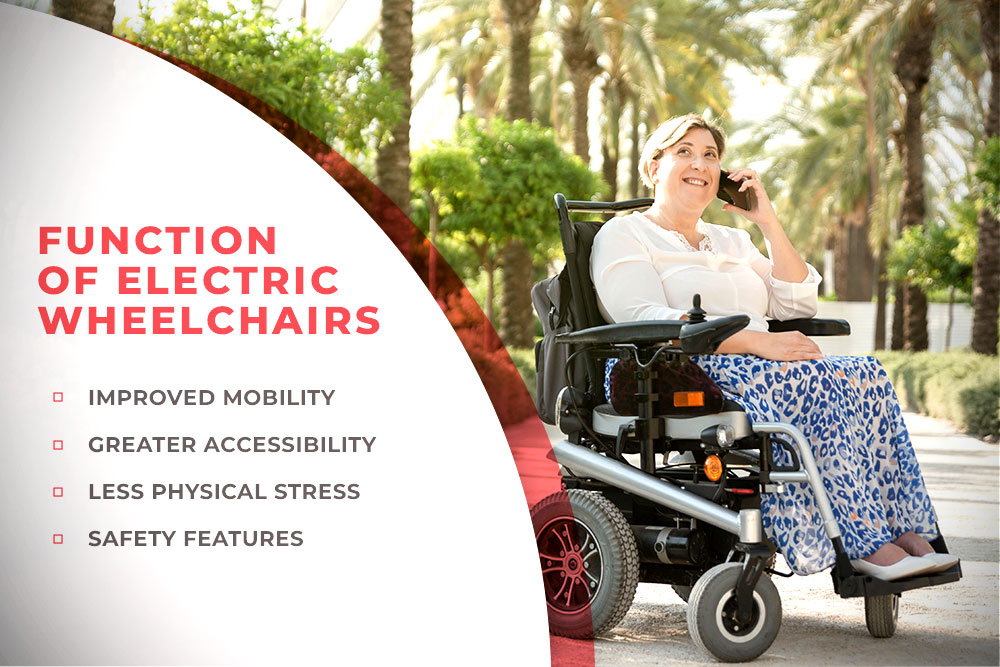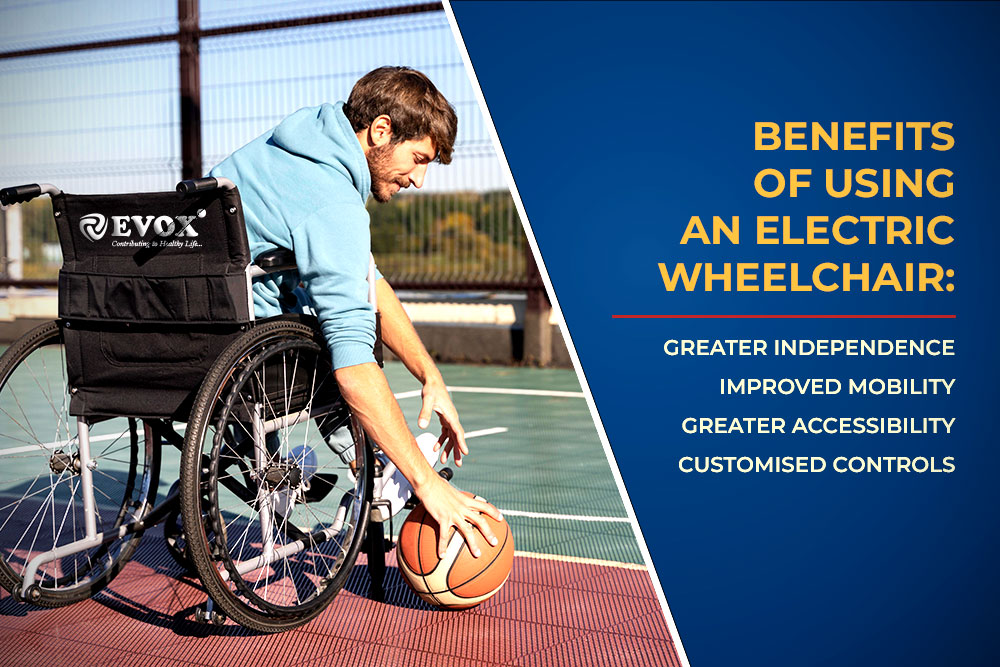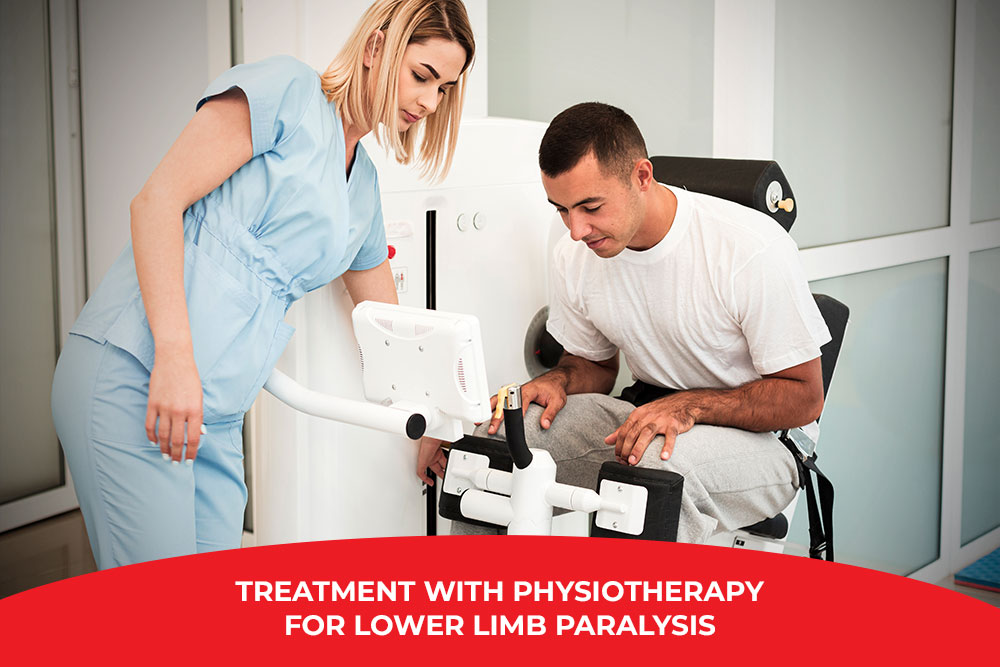Understanding Lower Limb Paralysis:
Lower limb paralysis also known as paralysis of lower extremities is the loss of movement or function in the legs, which is typically brought on by injury to the spinal cord or nearby nerves. Walking, balancing, and other daily activities that call for lower body mobility may become difficult as a result of this condition. Individuals with lower limb paralysis can regain their independence with the help of appropriate medical care, rehabilitation, and assistive technology.
The Function of Electric Wheelchairs:
People with poor or absent lower limb function can use electric wheelchairs to help them move around. Numerous advantages that aid in recovery and improve quality of life are provided by these cutting-edge devices:
- Improved Mobility: People with lower limb paralysis can move around freely and independently thanks to electric wheelchairs. Users can move through different terrains, including both indoor and outdoor settings, with simple controls.
- Greater Accessibility: Users of electric wheelchairs can more easily access a variety of surfaces, including tables, counters, and vehicles, thanks to features like tilting and adjustable seat heights.
- Less Physical Stress: Electric wheelchairs operate with much less physical strain than manual wheelchairs. They are powered by an electric motor, which reduces upper body stress and frees users' energy for other activities.
- Safety Features: Contemporary electric wheelchairs come with security features like stability controls, seatbelts, and anti-tip mechanisms. During routine activities and outdoor excursions, these features guarantee the user's security and offer peace of mind.


Wheelchair Selection for Patients with Paralysis:
Because the wheelchair they choose can greatly affect their daily activities and quality of life, choosing the right chair is crucial for those who have lower limb paralysis. Electric wheelchairs offer cutting-edge features and technology to improve mobility and are especially made for people with paralysis. Users can move independently and move through different terrains with these battery-powered wheelchairs, which are simple to operate.
The following are some benefits of using an electric wheelchair:
- Greater Independence: Electric wheelchairs give people with lower limb paralysis the freedom to move around on their own, reducing their dependence on helpers or assistive technology.
- Improved Mobility: People using electric wheelchairs can move around obstacles and go farther in comfort. Many models ensure user comfort by offering features for pressure relief and movable seating positions.
- Greater Accessibility: Electric wheelchairs are made to be accessible in a variety of settings, including homes, public areas, and transportation hubs. They allow users to adjust the seat's height or tilt it back, allowing them to interact with others at eye level and reach higher surfaces.
- Customised Controls: Electric wheelchairs can be made to accommodate the unique requirements of paralysed people. Customised controls, such as speed adjustment, joystick sensitivity, and programmable buttons, guarantee the best possible user experience and control.


Physiotherapy and the Use of Electric Wheelchairs:
Even after purchasing an electric wheelchair, physical therapy is still a crucial component of the healing process. Physiotherapists collaborate closely with patients to create wheelchair-complementing exercises and activities. To maximise muscle function and avoid secondary complications like joint contractures or pressure sores, this includes strengthening exercises, range-of-motion drills, and balance training.
Treatment with Physiotherapy for Lower Limb Paralysis:
While electric wheelchairs make it easier to move around, they should be used in conjunction with physiotherapy for the best possible recovery. Through specific exercises and techniques, physiotherapy aims to increase muscle strength, flexibility, and coordination. The following are some advantages of physiotherapy for people with lower limb.
- Strengthening of the muscles: Physiotherapists create exercise regimens to target particular muscle groups and assist patients in regaining strength in their lower limbs. Range-of-motion exercises, functional movements, and resistance training are a few examples of these workouts.
- Training in Balance and Coordination: Safe and effective use of an electric wheelchair depends on having good balance and coordination, which is improved through physiotherapy. People who are using a wheelchair can maintain stability by performing balance exercises and using weight-shifting techniques.
- Gait Training: For people hoping to regain their ability to walk, physiotherapy is essential to gait training. Physiotherapists help in relearning walking patterns and enhancing general mobility by using specialised techniques and aids like parallel bars and braces.
- Pain Management: In order to reduce the discomfort brought on by lower limb paralysis, physiotherapy also addresses pain management techniques, such as massage, stretching exercises, and heat and cold therapy.
- Keeping Your Body and Mind Healthy: It's important to put mental health ahead of physical recovery because living with lower limb paralysis can be emotionally difficult. The emotional support and motivation required during the recovery process can be obtained by participating in enjoyable activities, joining support groups, and seeking counselling services.

Overcoming Obstacles:
Using electric wheelchairs to recover from lower limb paralysis is not without its obstacles. It can be overwhelming at first to get used to the wheelchair, learn how to use it confidently, and deal with societal obstacles. However, people can overcome these obstacles and thrive in their new reality if they persevere, have a positive outlook, and have a supportive network..
Conclusion:
Although lower limb paralysis comes with many difficulties, people can regain their independence and enhance their quality of life with the right help and resources. While lower limb paralysis physiotherapy treatment complements the use of electric wheelchairs by concentrating on muscle strengthening, improving coordination, and accelerating overall recovery, electric wheelchairs are a useful tool for facilitating mobility. Individuals with lower limb paralysis can set out on a journey of recovery and reclaim their freedom to explore the world around them by embracing the advancements in assistive technology and making use of thorough rehabilitation techniques.
